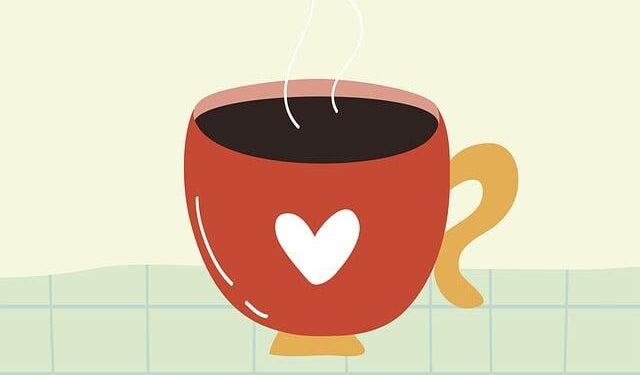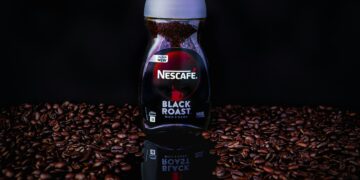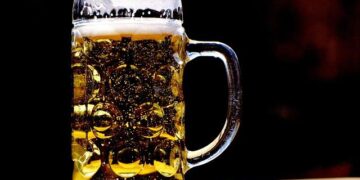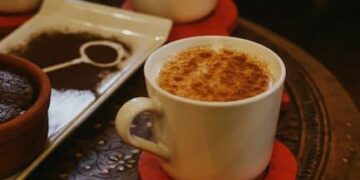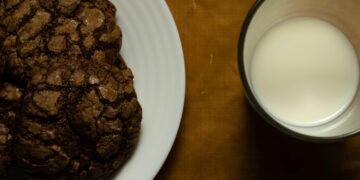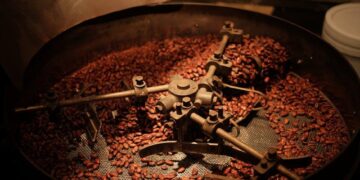Table of Contents
Part 1: The Heartbreak of Bad Cold Brew & The Day I Almost Gave Up
My name is Alex, and for years, I was trapped in a vicious cycle of cold brew disappointment.
Like many of you, I was drawn in by the promise of a coffee that was smooth, rich, and low in acidity—the perfect antidote to a hot summer day.
I dove into the world of home brewing with boundless enthusiasm, devouring every online guide, forum post, and YouTube tutorial I could find.
I did everything “right.” I bought expensive, freshly roasted beans from local artisans.
I invested in a quality burr grinder.
I meticulously measured my coffee and water, following the so-called “golden ratios” to the gram.
Yet, my results were a constant source of frustration.
One batch would be shockingly sour, a watery, acidic mess that made my face pucker.1
The next, after a slight adjustment, would swing violently in the other direction, producing a brew so harsh and bitter it tasted like burnt ash.3
And sometimes, it would just be…
weak.
A lifeless, brown water that was a pale imitation of the bold, flavorful cold brew I’d enjoyed in cafes.
My kitchen counter became a graveyard of failed experiments and half-empty mason jars, each one a monument to my inability to crack the code.
My Key Failure Story: The Party That Wasn’t
The breaking point came one sweltering July afternoon.
I was hosting a backyard barbecue for a dozen friends, and I had decided this would be the day I finally redeemed myself.
I was going to make a massive, half-gallon batch of cold brew that would be the star of the show.
I spared no expense.
I used a beautiful single-origin Colombian bean, ground it to what I believed was the perfect “coarse” consistency, and steeped it for exactly 18 hours.
I felt a surge of confidence as I filtered the dark, fragrant liquid.
This was it.
The moment of truth arrived as my friends gathered on the patio.
I proudly poured the coffee over ice, handed out the glasses, and took my first expectant sip.
My heart sank.
It was an unmitigated disaster—aggressively bitter, with a muddy, gritty texture that coated my tongue.2
I watched in quiet horror as my friends took polite sips and then subtly set their glasses aside.
Later that evening, after everyone had left, I poured all 64 ounces of my expensive, undrinkable failure down the kitchen drain.
It felt like a final, definitive defeat.
I was ready to give up and resign myself to paying $6 a cup for the rest of my life.
Part 2: The Epiphany — Cold Brew Isn’t Brewed, It’s Infused
Defeated, I took a break from coffee and stumbled into a different world of flavor creation.
I started reading about the craft of making artisanal spirits and liqueurs—how mixologists and distillers create complex flavors by steeping botanicals in alcohol.
I learned about the art of infusion, a slow, patient process of coaxing flavor out of ingredients like herbs, fruits, and spices.6
The key, I discovered, was control.
The goal was to gently extract the desirable aromatic oils and sweet compounds while leaving behind the harsh, bitter tannins that could ruin the final product.
It was a delicate dance of time, temperature, and preparation.7
And then, it hit me.
It was a genuine lightbulb moment that changed my entire perspective.
I had been trying to “brew” coffee.
But cold brew isn’t brewed.
Cold brew is infused.
This simple reframing was revolutionary.
Hot brewing is a fast, aggressive chemical reaction.
You use the intense energy of hot water—typically between 195°F and 205°F—to rapidly break down and extract compounds from the coffee grounds.9
It’s a process of force.
Cold brewing, on the other hand, is a gentle process of diffusion and dissolution that happens over many hours at a low temperature.11
It has far more in common with a room-temperature gin infusion than a hot tea steep.
In this new paradigm, the coffee grounds weren’t just grounds; they were the
botanical.
The water wasn’t just water; it was the solvent.
The entire process wasn’t about a quick, heated extraction; it was about a long, slow, and deliberate infusion designed to pull out the sweet, chocolatey, and smooth flavors while leaving the bitter acids and woody plant fibers behind.12
This realization explained all of my past failures.
I had been applying the logic of hot brewing to a cold infusion process, and it was never going to work.
I wasn’t just following a bad recipe; I was operating from a fundamentally flawed mental model.
Armed with this new perspective, I approached my next batch not as a barista, but as a master infusionist.
And that’s when everything changed.
Part 3: The Five Pillars of Flawless Cold Brew Infusion
Thinking of cold brew as an infusion gives us a powerful new framework.
Instead of a random collection of rules, we now have five distinct pillars to build our perfect batch upon.
By mastering each one, you move from being a recipe-follower to a true architect of your coffee.
Pillar 1: The Botanical — Choosing Your Coffee with an Infusionist’s Eye
An infusion is only as good as its core ingredient.
A mixologist wouldn’t use a delicate flower for a long, robust infusion, and we shouldn’t either.
Our goal is to select a “botanical”—a coffee bean—that is chemically primed to release its best flavors during a long, slow, low-energy steep.
Roast Profile as Botanical Prep
The roasting process is what prepares our botanical for infusion by making its flavor compounds soluble.10
For cold brew,
medium to dark roasts are the superior choice.
The longer roasting time develops deep, rich notes of chocolate, nuts, and caramel, which are highly soluble and extract beautifully in cold water.
Crucially, this process also reduces the coffee’s perceived acidity.14
Light roasts, which are prized in hot brewing for their bright, complex acidity, are like a delicate, unprepared botanical for this method.
Their nuanced floral and fruity notes are harder to extract with cold water, and if the infusion is even slightly off, they can taste disappointingly sour or thin.2
Choosing a medium-dark or dark roast isn’t just a matter of taste; it’s a strategic decision to use a botanical that is chemically optimized for a successful cold infusion.
Origin as Flavor Base
Just as an infusionist chooses a base spice, we choose a coffee origin.
For a reliable, crowd-pleasing cold brew, you want a flavor base that is naturally low in acidity and high in body.
Beans from Latin America—especially Colombia, Brazil, and Guatemala—are fantastic starting points.
They consistently deliver the chocolatey, nutty, and smooth profiles that make cold brew so beloved.14
Certain Indonesian beans, like Sumatra, can also provide a wonderful earthy and full-bodied character.17
While African beans (like Ethiopian Yirgacheffe) can produce stunningly fruity cold brew, they are less forgiving and more prone to tasting sour if not infused perfectly, making them a better choice for when you’ve mastered the fundamentals.3
Pillar 2: The Preparation — Why Grind Size Is About Surface Area, Not Just “Coarseness”
How you prepare your botanical determines the rate and quality of the infusion.
For cold brew, this means mastering the grind.
The common advice is to “grind coarse,” but it’s more nuanced than that.
We’re controlling for surface area to manage a very long extraction time.
The Science of “Coarse”
A coarse and uniform grind—with particles resembling the texture of raw sugar or kosher salt—is the gold standard for cold brew.18
This larger particle size creates the ideal surface area for a slow, 12-to-24-hour infusion.
The water has enough time to gently penetrate the grounds and pull out the sweet, desirable compounds without aggressively stripping the bitter flavors from the bean’s inner cellulose structure.5
Using a grind that is too fine is the single most common cause of bitter cold brew.20
Fine grounds create a massive amount of surface area, which is great for a 30-second espresso shot but disastrous for a 16-hour steep.
The water extracts everything far too quickly, resulting in a bitter, over-extracted brew that is often sludgy and cloudy from the excess fine particles.18
Think of it like trying to make a delicate tea by grinding the leaves into a fine powder and steeping them for an hour—you’d extract every last drop of bitterness.
The Power of Uniformity
Just as important as the size of the grind is its consistency.
An uneven grind, with a mix of large boulders and fine dust, will extract unevenly.
The fine particles will over-extract and turn bitter long before the large particles have even begun to release their sweet flavors, resulting in a muddled, unbalanced cup.15
This is why a
burr grinder is a non-negotiable tool for serious cold brew.
It crushes the beans between two revolving abrasive surfaces, producing consistent and uniform particles.
A blade grinder, which simply smashes the beans with a spinning blade, creates a chaotic mix of dust and chunks and is the enemy of good coffee.2
This understanding of the relationship between grind size and time transforms troubleshooting from guesswork into a logical process.
These two variables are the primary control levers for your infusion.
If your brew is bitter (over-extracted), you can either decrease the steep time or increase the grind size (make it coarser).
If it’s sour (under-extracted), you can increase the steep time or decrease the grind size (make it finer).2
This gives you a clear, systematic way to dial in your perfect brew.
Pillar 3: The Solvent — The Unseen Power of Your Water
The solvent is the medium of our infusion, and since your final coffee is about 98% water, its quality is not a minor detail—it’s a critical component.11
Using a clean, neutral solvent is essential for allowing the true flavors of your coffee to shine.
Water is an Ingredient, Not an Afterthought
The simplest and most impactful upgrade you can make to your coffee is to stop using plain tap water.
Tap water often contains chlorine and other minerals or impurities that can impart undesirable off-flavors to your brew.21
At an absolute minimum, you should use
filtered water.
A simple carbon filter pitcher is an excellent and affordable starting point.25
A Home Brewer’s Guide to Water Chemistry
The world of water chemistry can seem intimidating, but for our purposes, we can borrow a key principle from coffee expert Scott Rao: the most important factor for flavor is not pH or Total Dissolved Solids (TDS), but alkalinity.25
In simple terms, alkalinity acts as a flavor buffer.
Water with very high alkalinity will neutralize the coffee’s natural, pleasant acids, resulting in a dull, flat, or chalky-tasting brew.26
This is a common issue in areas with “hard” water.
Conversely, water with very low alkalinity can result in a brew that is overly acidic or sour.
Since you’re unlikely to be performing laboratory tests on your water at home, the goal is consistency and neutrality.
Using a good carbon filter or simply buying bottled spring water will provide a clean, balanced solvent that lets your coffee’s character come through.25
One thing to avoid is using pure distilled or reverse osmosis (RO) water on its own.
While it’s free of impurities, it also lacks the small amount of minerals (like magnesium and calcium) that are actually necessary for proper flavor extraction, which can lead to a flat, uninteresting cup.24
This hidden variable of water chemistry is often the culprit behind inconsistent results.
If you’ve ever followed a recipe perfectly but ended up with a brew that tastes completely different from the one in the video, your local tap water is the most likely reason.
The water in Seattle is very different from the water in Chicago, and that difference manifests directly in your cup.
By switching to a consistent, filtered water source, you eliminate one of the biggest and most frustrating variables in the entire process.
Pillar 4: The Infusion Matrix — A Foolproof Recipe for a Half-Gallon Batch
With our botanical, preparation, and solvent chosen, we can now define the infusion itself.
This means setting a precise ratio and steeping time.
The most accurate way to do this is by using weight (grams), as volume measurements of coffee grounds can be inconsistent.1
Defining Your Brew: Concentrate vs. Ready-to-Drink (RTD)
There are two main strategies for cold brew infusion: creating a strong concentrate that you dilute later, or making a ready-to-drink brew from the start.
- Concentrate (Recommended): This is the professional approach. Using a coffee-to-water ratio between 1:4 and 1:8 (e.g., 1 gram of coffee for every 8 grams of water) creates a potent concentrate.28 This method is space-efficient and gives you maximum flexibility, allowing you to dilute the final product to your exact taste with water, milk, or ice. A 1:8 ratio is an excellent, versatile starting point.
- Ready-to-Drink (RTD): If you prefer a simpler process, you can use a ratio closer to that of hot coffee, such as 1:15. This will produce a brew that is ready to drink straight from the jar, with no dilution needed.31
The Infusion Process: Time and Temperature
The final variables are steep time and temperature.
- The Sweet Spot: For a room temperature infusion, the consensus sweet spot is between 16 and 20 hours.1 Steeping for less than 12-14 hours often results in an under-extracted, sour, or weak brew.34 Pushing beyond 24 hours is risky, as the water begins to extract unpleasant woody and bitter compounds from the coffee’s plant fibers.23
- Room Temp vs. Fridge: It is best to steep your cold brew at room temperature. The process is more efficient and extracts a fuller range of flavors.20 If you must steep it in the refrigerator, be aware that the cold temperature significantly slows down the infusion. You will need to extend the steep time to around
20 to 24 hours to achieve a similar level of extraction.21
To take all the guesswork out of your half-gallon batch, here is a precise cheat sheet.
| Brew Type | Coffee-to-Water Ratio | Coffee Grounds (Weight) | Coffee Grounds (Volume, Approx.) | Water (Weight/Volume) | Water (Volume, Approx.) | Steep Time (Room Temp) |
| Concentrate | 1:8 | 227 g | ~2.5 cups | 1814 g (or 1814 mL) | ~7.7 cups | 16-20 hours |
| Ready-to-Drink | 1:15 | 121 g | ~1.3 cups | 1814 g (or 1814 mL) | ~7.7 cups | 16-20 hours |
Note: A half-gallon is approximately 1892 mL.
This recipe uses 1814 mL (64 fl oz) of water, which fits perfectly in a standard half-gallon mason jar with room for the grounds.
Pillar 5: The Refinement — Finishing & Storing Your Infusion
The final stage of our process is just as critical as the first.
Proper filtration and storage ensure your beautifully crafted infusion is clear, clean-tasting, and stays fresh for as long as possible.
Multi-Stage Filtration for Ultimate Clarity
To achieve a professional-quality, sediment-free cold brew, a two-step filtration process is essential.
This prevents the “muddy” or “gritty” mouthfeel that can ruin an otherwise great batch.3
- Step 1: The Coarse Strain. The first pass is designed to remove the bulk of the coffee grounds. You can do this by slowly pouring the brew through a fine-mesh kitchen sieve, a nut milk bag, or by using the plunger of a French press.38 The most important rule here is to
be patient and let gravity do the work. Do not squeeze or press the grounds in the filter. This forces out fine particles and bitter-tasting oils, undoing all the careful work of your gentle infusion.21 - Step 2: The Fine Polish. After the coarse strain, you will still have very fine coffee particles, or “silt,” suspended in the liquid. To remove these and achieve a crystal-clear brew, perform a second filtration. Slowly pour the coffee through a paper coffee filter (a large Chemex or basket-style filter works well) or a double layer of cheesecloth.37 This step takes time, but the reward is a remarkably clean and smooth final product.
“Bottling” and Storing Your Concentrate
Once filtered, your cold brew should be stored properly to protect its flavor.
- Container: Use airtight, glass containers like mason jars, swing-top bottles, or a pitcher with a tight-fitting lid. Glass is non-porous, meaning it won’t absorb fridge odors or impart any plasticky flavors into your coffee.41
- Location: Store it in the refrigerator immediately. Cold temperatures are essential to slow down oxidation and preserve freshness.43
- Shelf Life: Properly stored, undiluted cold brew concentrate will last for up to two weeks in the fridge, although its flavor is at its peak in the first 7-10 days.42 Once you dilute it with water or add any milk or sugar, its shelf life drops dramatically to just 2-3 days.42 For this reason, always store your brew as a concentrate and dilute it one glass at a time.
Diluting Your Concentrate for Serving
When you’re ready to enjoy your cold brew, you can dilute the concentrate to your preferred strength.
- A 1:1 ratio (one part concentrate to one part water or milk) is a great starting point for a strong, full-flavored coffee.30
- A 1:2 ratio (one part concentrate to two parts water or milk) will yield a lighter, more sessionable cup.
Start with a 1:1 ratio, taste, and adjust from there.
You are the final judge of what tastes best to you.
Pour it over ice, and enjoy the fruits of your labor.
Part 4: Troubleshooting Your Infusion: A Diagnostic Guide
With our infusion framework, common cold brew problems are no longer frustrating failures.
They are simply diagnostic clues that tell us how to adjust our process.
If your brew isn’t perfect, consult this guide to understand what your coffee is telling you.
| Problem (Taste/Appearance) | Likely Infusion Error | Solution(s) |
| Bitter, Harsh, Astringent | Over-Infused: Too many bitter compounds were extracted. | Grind Coarser: Reduce the surface area of your grounds.Reduce Steep Time: Pull the brew an hour or two earlier next time.Agitate Less: If you’re stirring, be more gentle or stir only once at the beginning. 4 |
| Sour, Acidic, Grassy | Under-Infused: Not enough of the sweet compounds were extracted to balance the natural acids. | Grind Finer: Increase the surface area to speed up extraction.Increase Steep Time: Let the infusion go for another few hours.Check Temperature: Ensure you’re brewing at room temp, not in a cold basement. 1 |
| Weak, Watery, Thin | Under-Infused / Wrong Ratio: The ratio of coffee to water was too low for the steep time. | Increase Coffee Amount: Move from a weaker ratio (like 1:15) to a stronger one (like 1:10 or 1:8).Increase Steep Time: Give the water more time to extract flavor. 35 |
| Cloudy, Muddy, Gritty | Poor Filtration: Fine sediment (“silt”) was not properly removed. | Use Multi-Stage Filtration: Always follow a coarse strain with a fine paper filter polish.Check Grind Uniformity: A poor quality grinder can produce excess fines. 22 |
Part 5: Advanced Infusion Techniques: The Master’s Touch
Once you have mastered the five pillars and can consistently produce a great batch of cold brew, you can begin to experiment with advanced techniques.
These methods give you even greater control, allowing you to fine-tune the flavor profile and add layers of complexity.
Technique 1: The “Hot Bloom” — A Flash of Heat for Aromatic Complexity
This technique involves a brief, initial application of heat to alter the extraction.
- What It Is: Before adding your cold water, wet the coffee grounds with a small amount of hot water (ideally 195-205°F or 90-96°C, not boiling).49 Use about twice the weight of water to coffee (e.g., for 227g of coffee, use about 450g of hot water). Let it sit and “bloom” for 30-45 seconds, then proceed with adding the remaining cold water for the long steep.50
- Why You’d Use It: The initial blast of heat does two things. First, it aggressively forces trapped CO2 out of the grounds, which can lead to a more even and efficient extraction during the cold steep phase.11 Second, and more importantly, the heat extracts a small amount of the more volatile, acidic, and floral flavor compounds that cold water alone struggles to capture.50 This adds a bright, aromatic complexity to the final brew, pushing it closer in profile to a Japanese-style iced coffee. It’s a fantastic way to add another dimension to your cold brew.
Technique 2: Strategic Agitation — Controlled Turbulence for Efficiency
Agitation is the simple act of stirring or swirling the grounds during the infusion.
It’s a powerful tool, but one that requires a delicate touch.
- What It Is: Agitation breaks up the pocket of saturated water that forms around each coffee particle, exposing it to fresh water and thereby increasing the rate and efficiency of the extraction.53
- Why You’d Use It: A gentle stir at the very beginning of the process is essential to ensure all the grounds are evenly saturated.55 Some brewers also employ a single, very gentle stir about halfway through the steep (e.g., at the 8-hour mark of a 16-hour brew) to re-energize a slowing extraction.53
- The Warning: This is a technique where less is more. Over-agitating—stirring too often or too vigorously—is a fast track to a bitter, over-extracted brew. It mechanically forces the extraction of undesirable compounds. Treat it as a precision tool, not a brute-force one.53
Technique 3: Alternative Infusion Environments (A Brief Look)
While immersion is the most common method, other environments can produce unique results.
- Slow Drip (Kyoto-Style): This visually striking method uses a tower to drip cold water, one drop at a time, over a bed of coffee grounds for 3-5 hours. It’s equipment-intensive but produces an exceptionally clean, nuanced, and delicate brew with very little bitterness.37
- Sous Vide Infusion: This modern technique uses a sous vide immersion circulator to hold a water bath at a precise, gentle temperature (e.g., 150°F / 65°C). The coffee and water are sealed in a mason jar and placed in the bath. The gentle heat dramatically accelerates the infusion, producing a result remarkably similar to traditional cold brew in just 2 to 4 hours instead of 12-24.57 It’s the ultimate hack for delicious cold brew on demand.
| Technique | What It Is | Why You’d Use It | Key Consideration |
| Hot Bloom | Briefly pre-wetting grounds with hot water before the cold steep. | To add aromatic complexity and brightness; to improve extraction efficiency. | Changes the flavor profile; it’s a hybrid between cold brew and iced coffee. |
| Strategic Agitation | Gently stirring the grounds once or twice during the steep. | To ensure even saturation and boost a slowing extraction. | Very easy to overdo, which causes bitterness. Be gentle. |
| Slow Drip | Dripping cold water slowly through grounds over several hours. | To create a super clean, delicate, and nuanced brew. | Requires specialized, often expensive, equipment. |
| Sous Vide | Steeping in a sealed jar in a precisely heated water bath. | To drastically reduce infusion time to 2-4 hours with similar results. | Requires a sous vide machine. |
Part 6: Conclusion — You Are Now the Architect of Your Cold Brew
Looking back, that disastrous party was the best thing that could have happened to my coffee journey.
That moment of failure forced me to abandon the confusing and contradictory rules I had been following and search for a new way of understanding.
The epiphany that cold brew is a gentle infusion, not an aggressive brew, gave me the framework I needed to finally take control.
Today, my process is replicable, my results are consistent, and the cold brew I make is something I’m genuinely proud to share.
The goal of this guide was never to just give you another recipe.
It was to give you a new mental model.
By thinking like an infusionist and focusing on the five pillars—The Botanical, The Preparation, The Solvent, The Infusion Matrix, and The Refinement—you are no longer at the mercy of a random set of instructions.
You now have the tools to make intentional choices.
You can select a different “botanical” (a dark roast for chocolate notes, a medium roast for more balance).
You can adjust your “preparation” (a slightly finer grind to extract more from a stubborn bean).
You can control your “infusion time” to dial in the exact strength you prefer.
You are now the architect.
The frustrating cycle is over.
Go forth and create your perfect, signature cold brew.
Works cited
- Best way to make a gallon cold brew? – Reddit, accessed August 2, 2025, https://www.reddit.com/r/coldbrew/comments/wtkh6k/best_way_to_make_a_gallon_cold_brew/
- Having Trouble With Your Cold Brew Coffee? Here Are 5 Tricks To Try – JavaPresse, accessed August 2, 2025, https://www.javapresse.com/blogs/cold-brew/having-trouble-with-your-cold-brew-coffee-here-are-5-tricks-to-try
- My cold brew is too bitter, what should I do? : r/coldbrew – Reddit, accessed August 2, 2025, https://www.reddit.com/r/coldbrew/comments/czxqbz/my_cold_brew_is_too_bitter_what_should_i_do/
- Coffee Tastes Bitter? Here Why, And How To Fix It, accessed August 2, 2025, https://coffeebros.com/blogs/coffee/coffee-tastes-bitter-here-why-and-how-to-fix-it
- The Mistake You Need To Avoid For Better Cold Brew At Home – Chowhound, accessed August 2, 2025, https://www.chowhound.com/1731713/avoid-mistake-better-cold-brew-coffee-home/
- Infusion and maceration – Difford’s Guide, accessed August 2, 2025, https://www.diffordsguide.com/encyclopedia/325/cocktails/infusion-and-maceration
- A Bartender Guide to Infusion – Diageo Bar Academy, accessed August 2, 2025, https://www.diageobaracademy.com/en-us/home/customer-service/a-bartender-guide-to-infusion
- The Science of Rapid Liquor Infusion | SevenFifty Daily, accessed August 2, 2025, https://daily.sevenfifty.com/the-science-of-rapid-liquor-infusion/
- “The Science Behind Your Cup of Coffee: Understanding Coffee Brewing a – Five Star Coffee, accessed August 2, 2025, https://five-star-coffee.com/blogs/news/the-science-behind-your-cup-of-coffee-understanding-coffee-brewing-and-flavor
- How Coffee Extraction Works – Clive Coffee, accessed August 2, 2025, https://clivecoffee.com/blogs/learn/how-coffee-extraction-works
- The Science of Brewing Coffee – MistoBox’s Blog, accessed August 2, 2025, https://blog.mistobox.com/the-science-of-brewing-coffee/
- The Cold Truth About Cold Brew – Kohana Coffee, accessed August 2, 2025, https://kohanacoffee.com/blogs/news/the-cold-truth-about-cold-brew
- Summer Brewing Methods Showdown: Cold Brew vs. Flash Brew vs. Iced Pour-Over, accessed August 2, 2025, https://www.secondbestcoffee.com/blog/2025/5/25/summer-brewing-methods-showdown-cold-brew-vs-flash-brew-vs-iced-pour-over
- What Are the Best Coffee Beans for Cold Brew?, accessed August 2, 2025, https://www.ictcoffee.com/news/what-are-the-best-coffee-beans-for-cold-brew/
- The Best Coffee for Cold Brew with a Recipe – Braised & Deglazed, accessed August 2, 2025, https://braisedanddeglazed.com/the-best-coffee-for-cold-brew-with-a-recipe/
- The perfect coffee beans for cold brew a busy professionals guide, accessed August 2, 2025, https://www.darkhorsecoffeecompany.com/blogs/coffee/the-perfect-coffee-beans-for-cold-brew-a-busy-professionals-guide
- Best Coffee Beans for Cold Brew – Blends and Single Origin, accessed August 2, 2025, https://thatscoldbrew.com/best-coffee-for-cold-brew/
- How to Grind Coffee for Cold Brew – 4 Easy Step (2025), accessed August 2, 2025, https://www.kimbocoffee.com/blogs/kimbo-blog/how-to-grind-coffee-for-cold-brew
- Cold Brew 101 – All About The Grind – Takeya USA, accessed August 2, 2025, https://takeyausa.com/blogs/fitness-healthy-living/cold-brew-101-all-about-the-grind
- 10 Mistakes Everyone Makes With Homemade Cold Brew, According To An Expert Barista, accessed August 2, 2025, https://www.foodie.com/1528341/mistakes-steeping-cold-brew-list/
- Six Common Mistakes When Making Cold Brew Coffee, accessed August 2, 2025, https://groundsandhoundscoffee.com/blogs/recent-posts/six-common-mistakes-when-making-cold-brew-coffee
- Why am I seeing sediments in my cold brew? My Coffee is Murky and cloudy, what do I do?, accessed August 2, 2025, https://ovalware.helpscoutdocs.com/article/55-why-am-i-seeing-sediments-in-my-cold-brew-my-coffee-is-murky-and-cloudy-what-do-i-do
- Cold Brew Coffee FAQs: Your Questions Answered | Stumptown Coffee Roasters, accessed August 2, 2025, https://www.stumptowncoffee.com/blogs/news/cold-brewing-faqs
- H2O, Hello There: An Introduction to Water for Coffee Brewing, accessed August 2, 2025, https://prima-coffee.com/blog/h2o-hello-there-an-introduction-to-water-for-coffee-brewing/
- Demystifying Water for Coffee — Scott Rao, accessed August 2, 2025, https://www.scottrao.com/blog/2023/6/4/demystifying-water-for-coffee
- Water and Coffee Acidity: How to Adapt Your Water for Different Extraction Methods – 25 Magazine, Issue 9 – Specialty Coffee Association, accessed August 2, 2025, https://sca.coffee/sca-news/25/issue-9/english/water-and-coffee-acidity-how-to-adapt-your-water-for-different-extraction-methods-25-magazine-issue-9
- Water Chemistry: what’s the best water for your brew? – Monogram Coffee, accessed August 2, 2025, https://monogramcoffee.com/blogs/news/whats-the-best-water-for-your-brew
- www.northstarroast.com, accessed August 2, 2025, https://www.northstarroast.com/blogs/brewing/how-to-make-cold-brew-coffee#:~:text=A%20ratio%20of%201%3A8,coffee%20to%202%20parts%20water.
- Cold Brew Coffee 101—Your Complete Guide to the Best Brew – CoffeeSock, accessed August 2, 2025, https://coffeesock.com/the-sock-life-1/2021/4/11/cold-brew-coffee-101your-complete-guide-to-the-best-brew
- Guide To Cold Brew – Counter Culture Coffee, accessed August 2, 2025, https://counterculturecoffee.com/blogs/counter-culture-coffee/guide-to-cold-brew
- How to Make Cold Brew Coffee, accessed August 2, 2025, https://www.northstarroast.com/blogs/brewing/how-to-make-cold-brew-coffee
- Cold Brew Coffee Ratios: 3 Steps For Perfect Flavor Every Time – ESPRO, accessed August 2, 2025, https://espro.com/blogs/coffee-talk/cold-brew-coffee-ratios
- www.equatorcoffees.com, accessed August 2, 2025, https://www.equatorcoffees.com/blogs/journal/how-long-to-steep-cold-brew#:~:text=The%20best%20part%20about%20making,time%20right%20in%20there%20somewhere.
- How To Make Cold Brew Coffee – Simply Recipes, accessed August 2, 2025, https://www.simplyrecipes.com/recipes/how_to_make_cold_brew_coffee/
- Why your cold brew is weak (and how you can fix it!) – Shelbru, accessed August 2, 2025, https://www.shelbru.com/blogs/blog/why-your-cold-brew-is-weak-and-how-you-can-fix-it
- How Long To Steep Cold Brew – We Tested, accessed August 2, 2025, https://thatscoldbrew.com/how-long-to-steep-cold-brew/
- Mastering Home Cold Brew Coffee: Your Ultimate Guide – OutIn, accessed August 2, 2025, https://outin.com/blogs/news/home-cold-brew-coffee-mastery
- How to Make Cold Brew Coffee, accessed August 2, 2025, https://primeroastcoffee.com/about-prime-roast-coffee/emilys-coffee-brewing-guides/how-to-make-cold-brew-coffee/
- Best filter to use for cold brew? – Coffee Stack Exchange, accessed August 2, 2025, https://coffee.stackexchange.com/questions/2140/best-filter-to-use-for-cold-brew
- Question about cold brew grind size? : r/coldbrew – Reddit, accessed August 2, 2025, https://www.reddit.com/r/coldbrew/comments/1bl2sln/question_about_cold_brew_grind_size/
- aerialresupplycoffee.com, accessed August 2, 2025, https://aerialresupplycoffee.com/blogs/the-resupply-blog/cold-brew-concentrate-can-it-go-bad#:~:text=It’s%20recommended%20to%20store%20cold,as%20glass%20or%20stainless%20steel.
- How To Store Cold Brew Coffee So It Preserves For A Long Time – DarkHorseCoffeeCompany, accessed August 2, 2025, https://www.darkhorsecoffeecompany.com/blogs/coffee/how-to-store-cold-brew-coffee
- Cold Brew Storage Tips – Buddha’s Cup, accessed August 2, 2025, https://buddhascup.com/blogs/kona-coffee-blog/cold-brew-storage-tips
- The Best Way to Store Cold Brew (and What to Avoid) – Birch Glen Roasters, accessed August 2, 2025, https://birchglenroasters.com/blogs/news/the-best-way-to-store-cold-brew-and-what-to-avoid
- Cold Brew Concentrate: Can it go bad? – Aerial Resupply Coffee, accessed August 2, 2025, https://aerialresupplycoffee.com/blogs/the-resupply-blog/cold-brew-concentrate-can-it-go-bad
- The Ultimate Guide on Making Cold Brew Coffee Concentrate – Sunday Table, accessed August 2, 2025, https://sundaytable.co/cold-brew-coffee-concentrate/
- Weak Tasting Coffee? 4 Reasons & Fixes For Weak Coffee. – Atlas Coffee Club, accessed August 2, 2025, https://club.atlascoffeeclub.com/weak-coffee-reasons-and-fixes/
- Why is my brew so weak? : r/coldbrew – Reddit, accessed August 2, 2025, https://www.reddit.com/r/coldbrew/comments/prj96e/why_is_my_brew_so_weak/
- Unlocking the Science of Blooming Coffee: Why It’s Essential for a Perfect Brew, accessed August 2, 2025, https://bazancoffee.com/blogs/news/blooming-coffee
- TIL just how much more flavor you get from blooming cold brew : r/Coffee – Reddit, accessed August 2, 2025, https://www.reddit.com/r/Coffee/comments/5ygsp5/til_just_how_much_more_flavor_you_get_from/
- Cold Brew Hot Bloom Method – DripBeans, accessed August 2, 2025, https://dripbeans.com/cold-brew-hot-bloom-method/
- What is the bloom? – Driftaway Coffee, accessed August 2, 2025, https://driftaway.coffee/bloom/
- Hardtank’s secret to increasing your cold brew extraction yield: The power of controlled agitation, accessed August 2, 2025, https://hardtank.com/2025/07/17/cold-brew-extraction-yield-agitation/
- How Agitation Affects Coffee Extraction – Ratio, accessed August 2, 2025, https://ratiocoffee.com/blogs/coffee-guides/how-agitation-affects-coffee-extraction
- Cold brew: agitate or not? : r/Coffee – Reddit, accessed August 2, 2025, https://www.reddit.com/r/Coffee/comments/3f1h84/cold_brew_agitate_or_not/
- Cornerstones of Brewing Coffee: Temperature, Agitation, and Extraction – ICOSA Brewhouse, accessed August 2, 2025, https://icosabrewhouse.com/blogs/news/cornerstones-of-brewing-coffee
- Sous Vide Hack: Quick and Easy Cold Brew – Anova Culinary, accessed August 2, 2025, https://anovaculinary.com/blogs/blog/sous-vide-hack-quick-and-easy-cold-brew
- Sous Vide Cold Brew Coffee – The Best Sous Vide Machine and Gear, accessed August 2, 2025, https://sousvideguy.com/recipe/sous-vide-cold-brew-coffee/
- Sous Vide Cold Brew Coffee {Quick + Easy} – Crave The Good, accessed August 2, 2025, https://www.cravethegood.com/sous-vide-cold-brew-coffee/
